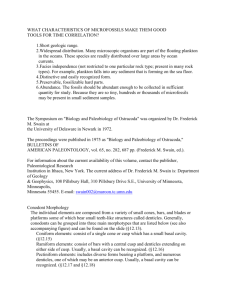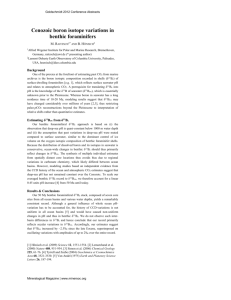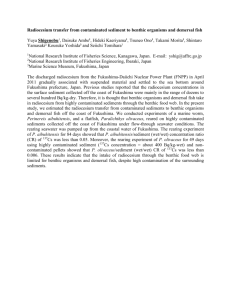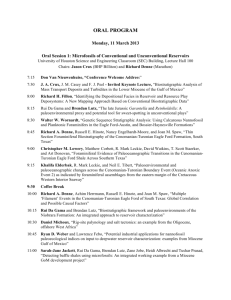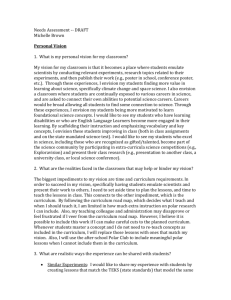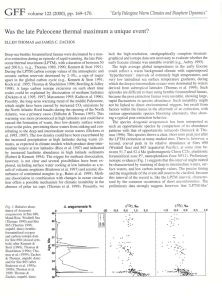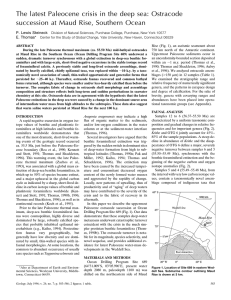POLISH POLAR RESEARCH VOL
advertisement
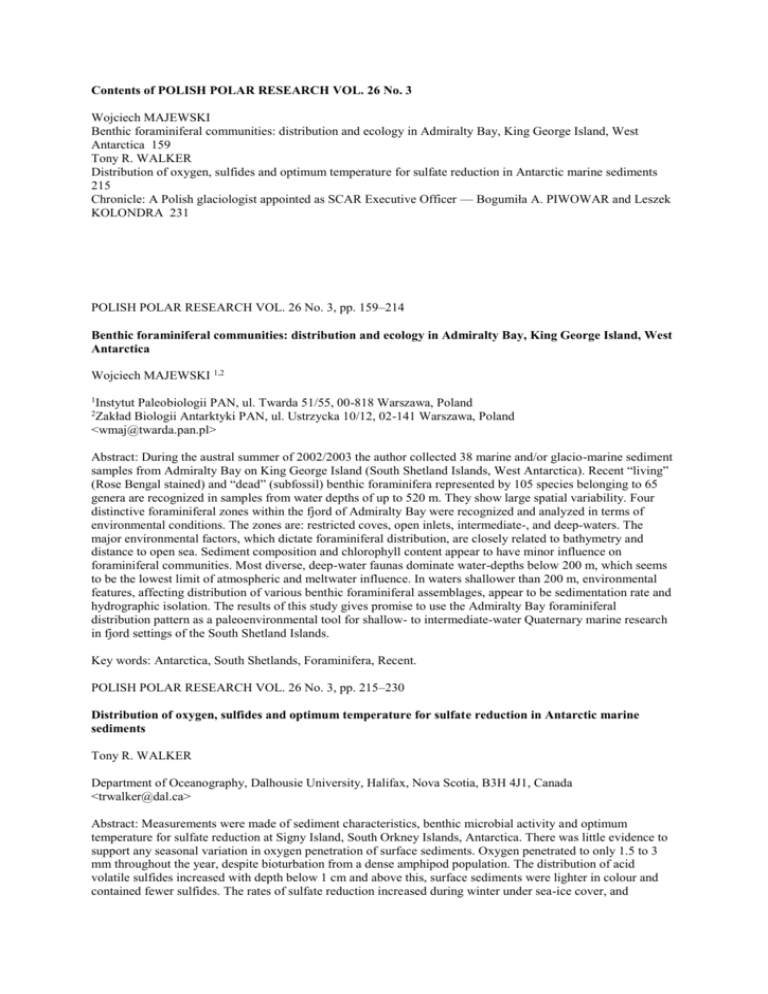
Contents of POLISH POLAR RESEARCH VOL. 26 No. 3 Wojciech MAJEWSKI Benthic foraminiferal communities: distribution and ecology in Admiralty Bay, King George Island, West Antarctica 159 Tony R. WALKER Distribution of oxygen, sulfides and optimum temperature for sulfate reduction in Antarctic marine sediments 215 Chronicle: A Polish glaciologist appointed as SCAR Executive Officer — Bogumiła A. PIWOWAR and Leszek KOLONDRA 231 POLISH POLAR RESEARCH VOL. 26 No. 3, pp. 159–214 Benthic foraminiferal communities: distribution and ecology in Admiralty Bay, King George Island, West Antarctica Wojciech MAJEWSKI 1,2 1 Instytut Paleobiologii PAN, ul. Twarda 51/55, 00-818 Warszawa, Poland Zakład Biologii Antarktyki PAN, ul. Ustrzycka 10/12, 02-141 Warszawa, Poland <wmaj@twarda.pan.pl> 2 Abstract: During the austral summer of 2002/2003 the author collected 38 marine and/or glacio-marine sediment samples from Admiralty Bay on King George Island (South Shetland Islands, West Antarctica). Recent “living” (Rose Bengal stained) and “dead” (subfossil) benthic foraminifera represented by 105 species belonging to 65 genera are recognized in samples from water depths of up to 520 m. They show large spatial variability. Four distinctive foraminiferal zones within the fjord of Admiralty Bay were recognized and analyzed in terms of environmental conditions. The zones are: restricted coves, open inlets, intermediate-, and deep-waters. The major environmental factors, which dictate foraminiferal distribution, are closely related to bathymetry and distance to open sea. Sediment composition and chlorophyll content appear to have minor influence on foraminiferal communities. Most diverse, deep-water faunas dominate water-depths below 200 m, which seems to be the lowest limit of atmospheric and meltwater influence. In waters shallower than 200 m, environmental features, affecting distribution of various benthic foraminiferal assemblages, appear to be sedimentation rate and hydrographic isolation. The results of this study gives promise to use the Admiralty Bay foraminiferal distribution pattern as a paleoenvironmental tool for shallow- to intermediate-water Quaternary marine research in fjord settings of the South Shetland Islands. Key words: Antarctica, South Shetlands, Foraminifera, Recent. POLISH POLAR RESEARCH VOL. 26 No. 3, pp. 215–230 Distribution of oxygen, sulfides and optimum temperature for sulfate reduction in Antarctic marine sediments Tony R. WALKER Department of Oceanography, Dalhousie University, Halifax, Nova Scotia, B3H 4J1, Canada <trwalker@dal.ca> Abstract: Measurements were made of sediment characteristics, benthic microbial activity and optimum temperature for sulfate reduction at Signy Island, South Orkney Islands, Antarctica. There was little evidence to support any seasonal variation in oxygen penetration of surface sediments. Oxygen penetrated to only 1.5 to 3 mm throughout the year, despite bioturbation from a dense amphipod population. The distribution of acid volatile sulfides increased with depth below 1 cm and above this, surface sediments were lighter in colour and contained fewer sulfides. The rates of sulfate reduction increased during winter under sea-ice cover, and remained high after ice break up. Seasonal water temperature was relatively constant between –1.8 and 0.5°C. Optimum temperature for anaerobic sediment respiration was investigated using different substrates and was found to be in the range 17–27°C, suggesting that sulfate reducing bacteria are psychrotolerant as they were inhibited by low temperatures. Key words: Antarctica, Signy Island, coastal sediments, oxygen penetration, sulfides, temperature, sulfate reduction.

